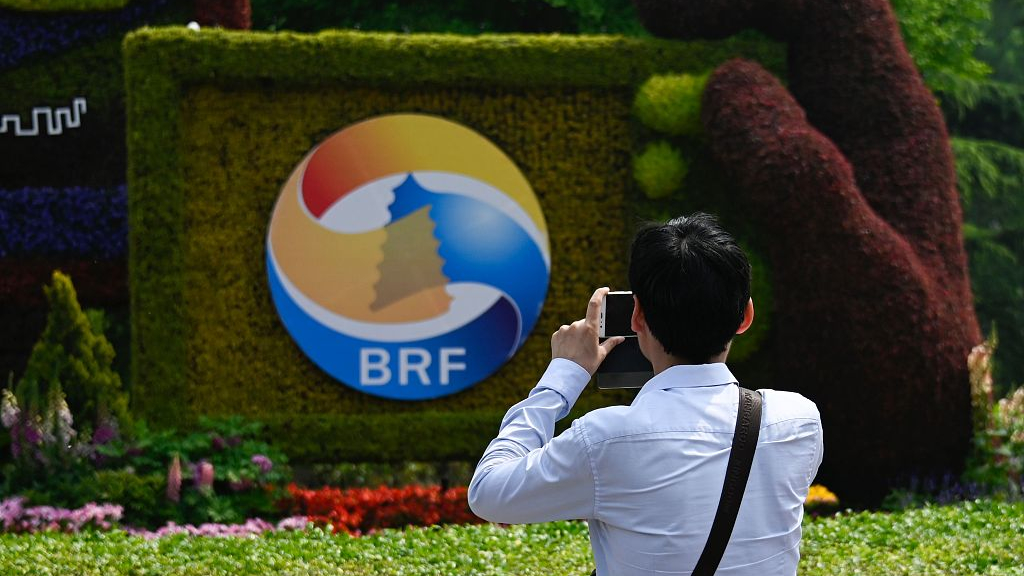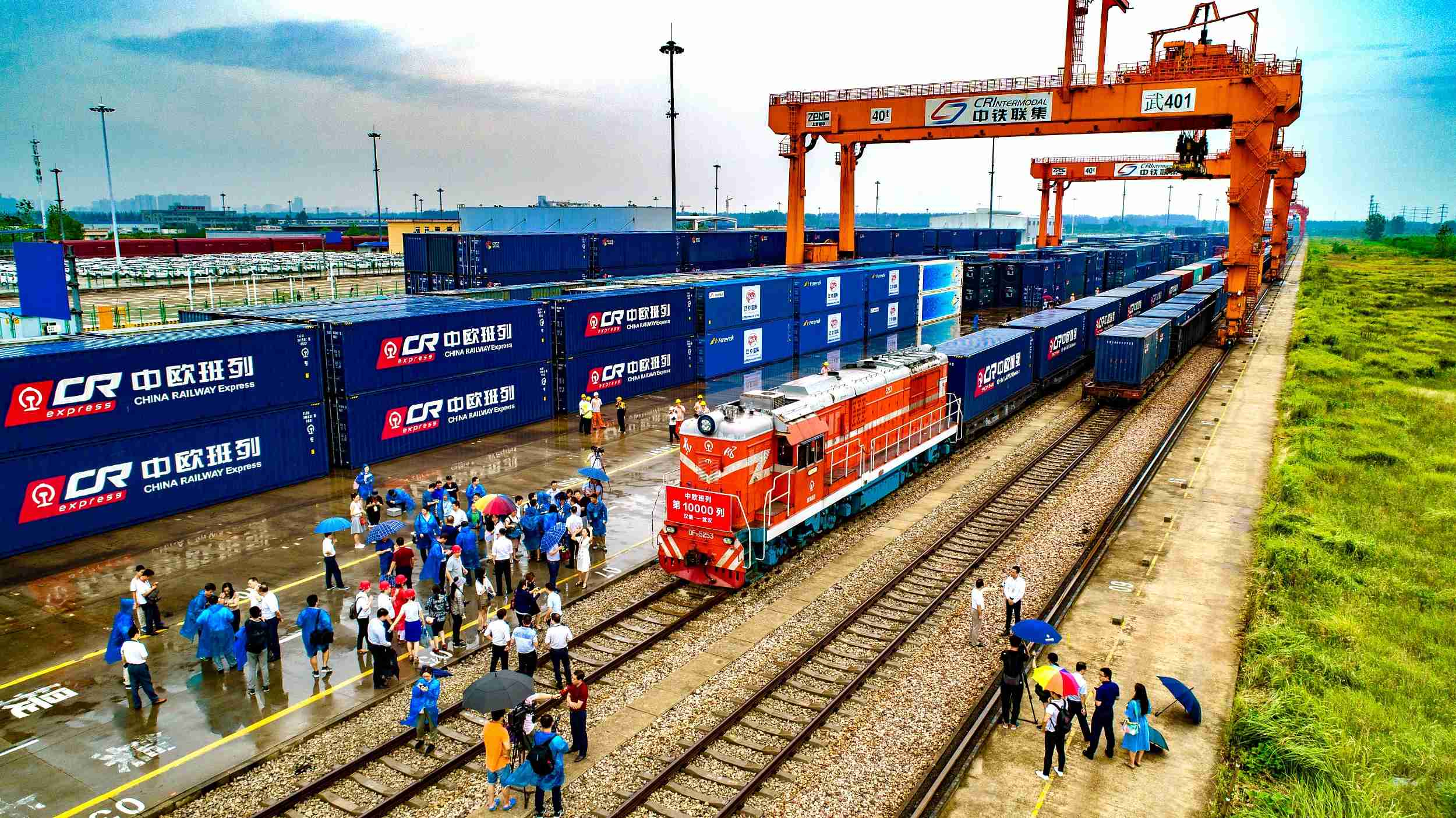
A man takes photo of a sign promoting the Belt and Road Forum for International Cooperation in Beijing, China, April 22, 2019. /VCG Photo
A man takes photo of a sign promoting the Belt and Road Forum for International Cooperation in Beijing, China, April 22, 2019. /VCG Photo
Editor's Note: Ji Xianbai is a research fellow with the International Political Economy Program of S. Rajaratnam School of International Studies, Nanyang Technological University, Singapore. The article reflects the author's opinions, and not necessarily the views of CGTN.
In September 2013, Chinese President Xi Jinping pronounced China's international economic cooperation vision, as incarnated in what was later termed the Belt and Road Initiative (BRI), in Kazakhstan. Six years on, how is the BRI being perceived in BRI partner countries?
Our research team at Nanyang Technological University led by Associate Professors Pradumna B. Rana and Chia Wai-Mun, and funded by Singapore's Ministry of Education, conducted an online perception survey among Asian opinion leaders on various aspects of the BRI earlier this year.
We received 1,230 responses from opinion leaders (including several ministerial-ranking officials) based in 26 countries of East and Southeast Asia, South Asia and Central Asia that have signed a memorandum of understanding on the BRI with China. In countries like Pakistan, Singapore, Bangladesh and the Philippines, more than 100 responses were collected. In terms of affiliation breakdown, 56 percent came from academia, 23 percent from policymakers and international civil servants, eight percent from business leaders, and six percent each from the civil society and media.
Several observations and policy lessons emerged from our survey.
First, Asian opinion leaders harbored largely positive views towards the BRI. They believe that China launched the BRI primarily to promote regional economic integration and connectivity. More than 40 percent of the respondents said the BRI represented a net opportunity for their countries whereas only 18 percent considered the BRI to be a net risk to be avoided.
Moreover, a similar share of the respondents rejected the notion of Chinese "debt-trap diplomacy." As to why, some opinion leaders attributed the debt sustainability challenges confronting some Asian BRI countries to pre-existing macroeconomic vulnerabilities, fiscal mismanagement or purely inappropriate project implementation rather than any sort of malicious intention on the part of the Chinese government.
Second, Asian opinion leaders had clear and strong opinions on the substantive focus of the BRI engagement. Generally, among the BRI's five stated policy objectives, strengthening infrastructure connectivity and facilitating unimpeded trade were viewed by the respondents to be more important to their countries than policy coordination, cultural bonds or financial integration.

China-Europe Railway Express. /VCG Photo
China-Europe Railway Express. /VCG Photo
Specific to the issue of infrastructure, the respondents to our survey felt that transport, energy and industrial facilities should be high on the BRI's agenda. Interestingly, Pakistani and Bangladeshi respondents almost unanimously perceived energy infrastructure as priority or relevant. This was a reflection of the fact that the two countries in recent years had suffered from frequent blackouts and load shedding. By contrast, few opinion leaders felt that the BRI should play an active role in developing institutional or other types of soft infrastructure.
Third, Asian opinion leaders saw both benefits and potential risks associated with the BRI. On the one hand, the respondents felt that the BRI would help their countries attract more trade, investment and tourism earnings from China and other BRI-participating countries. They also counted on the BRI to stimulate economic growth and technological advancement by closing infrastructure financing gaps in their countries. On the other hand, they were aware of some of the potential downsides of the BRI in relation to employment, environment, debt and corruption. But on balance, opinion leaders displayed a sense of constructive criticism.
Finally, Asian opinion leaders offered their advice to both Chinese and their own governments on how to maximize the BRI's benefits while managing risks. Among others, they called on China to enhance overall transparency of the BRI undertaking, offer employment and technology transfer opportunities to empower local communities, adapt the BRI to local needs and sensitivities, and allow foreign contractors to bid for BRI projects.
They also urged their home governments to strengthen internal governance (including fiscal conditions) and participate in the BRI with purpose by developing a complementary national infrastructure development strategy. Being level to the public about possible pros and cons of BRI projects and performing due diligence were also highlighted by the respondents as the advice that they would offer.
The BRI is entering its seventh year of development. Our survey offers a broadly representative snapshot of the perceptions of Asian elites on the BRI. And since it is in everyone's best interest to see the BRI succeed in a win-win manner, the policy recommendations arising from our survey should also be taken seriously by policymakers and stakeholders in China as well as countries that take part in BRI cooperation.
(If you want to contribute and have specific expertise, please contact us at opinions@cgtn.com.)